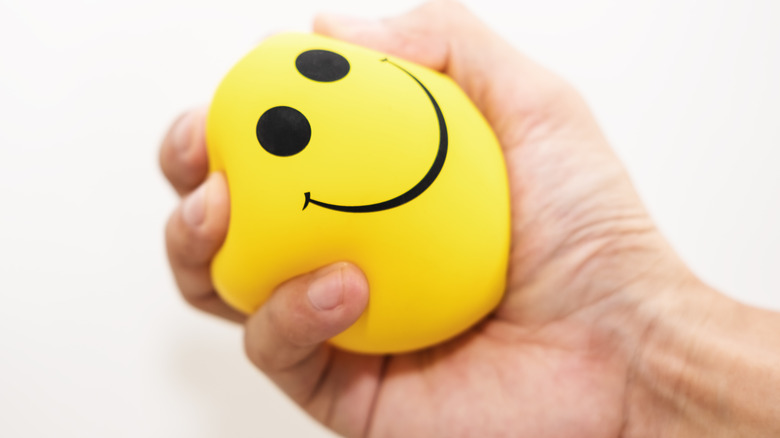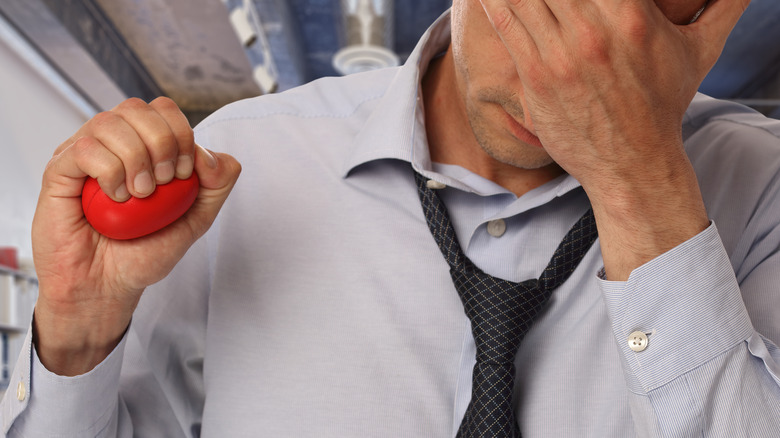How Can Stress Balls Benefit Your Health?
Coming in different sizes, shapes, and colors, stress balls may resemble a child's toy at first glance, but these cushy objects are not solely intended as a plaything. Rather, stress balls are tactile tools designed to help alleviate stress, anger, or anxiety through the contracting and relaxing of hand muscles (per Healthline). Whether made out of foam, fabric, rubber, or plastic, squeezing a stress ball can have a positive impact on both our physical and mental health.
Medical educator Dr. Dominique W. Brooks writes via Love to Know that the use of a stress ball can boost blood flow to the hands and wrists, thereby enhancing circulation. In addition to aiding circulatory health, the act of squeezing and releasing a stress ball can also strengthen the muscles in the hands and fingers. This can reduce one's risk for stress injuries which can occur through repetitive motions such as typing for extended lengths of time. Similarly, a stress ball may help treat or protect individuals from certain health conditions such as arthritis.
To give all parts of your hand a thorough workout, try a few of the following methods suggested by Dr. Brooks. You can build up finger strength by pinching the stress ball between your thumb and each of your fingers, one at a time. For wrist strength, try squeezing the stress ball for three seconds before releasing and do so for 20 repetitions. You can also try twisting the ball with both hands in order to strengthen your hands.
Psychological benefits of stress balls
Living up to its name, stress balls also hold the potential to relieve stress and improve our psychological health. Dr. Brooks writes that the contracting and releasing of hand muscles can help alleviate tension (per Love to Know). Squeezing a stress ball can activate nerves in the hand that are linked with brain regions responsible for regulating our emotions. In addition, these neural signals can also prompt the release of endorphins in the brain. Known as "feel-good" chemicals, endorphins are associated with pain relief and stress reduction, according to Medical News Today.
Use of a stress ball may also have the potential to reduce fear. Researchers from a 2015 study examined how various stress relief techniques affected cancer patients experiencing stress over treatment procedures such as chemotherapy or radiotherapy. Patient anxieties included fear of needles, fear of nausea, and claustrophobia, amongst others. Therapeutic interventions such as squeezing and releasing a stress ball in tandem with taking four deep, slow breaths were found to be among the most effective techniques used to decrease feelings of panic and fear in patients.
Lastly, Dr. Brooks suggests that utilizing a stress ball may also be beneficial for children with symptoms of autism or ADHD by providing a means to cope with frustration or manage behaviors such as fidgeting, rocking, or verbal repetition (via Love to Know).


